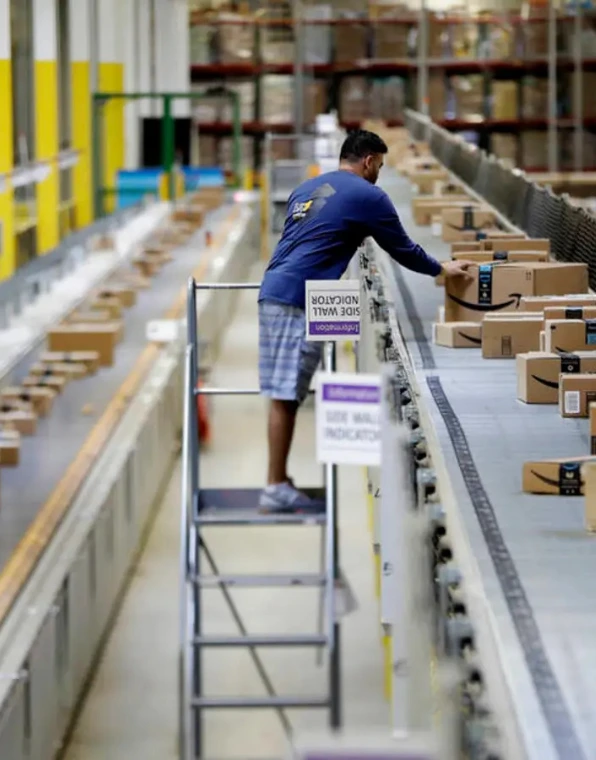Inventory management plays a pivotal role in your business’s ability to meet customer demand and maximize profitability. A perpetual inventory system provides real-time tracking of stock at the SKU level, streamlining your operations and boosting efficiency.
In this guide, we’ll walk you through how perpetual inventory systems work and why they are essential for staying in stock, controlling costs, and optimizing profitability.
What is a Perpetual Inventory System?
A perpetual inventory system is an advanced inventory management method that tracks stock levels in real time. Whenever items are received or sold, the system automatically updates quantities and inventory balance sheets, providing visibility into key business metrics such as inventory turnover ratios and optimal reorder quantities. This continuous tracking enables you to manage your cost of goods sold (COGS) and cash flow seamlessly.
How Perpetual Inventory Works
At its core, a perpetual inventory system aligns with your order-to-cash cycle. From supplier orders to fulfillment, the system updates your inventory levels and financial data at every stage. This real-time insight ensures that your business can respond quickly to demand and maintain a balanced stock.
Here’s how the system functions at different stages:
Supply Order Management: Perpetual inventory systems monitor inventory levels and sales trends. They can even automate reorder points, signaling when to replenish stock or placing purchase orders with suppliers.
Warehouse Receiving: Warehouse staff scan barcodes, which automatically updates inventory levels for the received goods.
Point of Sale (POS): When a customer makes a purchase, the system reduces inventory quantities even before the order is fulfilled, ensuring real-time availability across sales channels.
Customer Order Fulfillment: During order fulfillment, staff scan items to pack and ship, simultaneously updating both inventory and financial records.
Perpetual vs. Periodic Inventory Systems
While perpetual systems provide real-time data, periodic inventory systems update inventory only at specific intervals, typically requiring physical counts to track inventory levels. Periodic systems are less effective for fast-paced e-commerce businesses that need up-to-the-minute data to meet demand.
Periodic Inventory Systems: Generally used by smaller businesses with simpler inventory needs, periodic systems require manual inventory counts to validate stock levels and financial data. They are useful for businesses with fewer SKUs but lack the immediacy of perpetual systems.
The Benefits of a Perpetual Inventory System
E-Commerce FulfillmentImplementing a perpetual inventory system offers significant advantages, particularly for businesses like FulfillMe, which provide complex shipping and fulfillment services across multiple sales channels. Here are some key benefits:
1. Inventory Visibility
With real-time updates, you always know exactly how much stock you have. This visibility minimizes the risk of stockouts and overstocking, ensuring you can adjust quickly to demand changes.
2. Improved Forecasting and Planning
Real-time data allows you to make informed decisions about purchasing, stocking, and pricing. Insights into trends and seasonality enable better forecasting and more accurate inventory planning.
3. Enhanced Customer Satisfaction
Accurate and up-to-date inventory helps you fulfill orders on time, which is crucial in e-commerce. By offering transparency on product availability, you reduce the risk of backorders or customer frustration, building loyalty.
4. Cost Efficiency
With automated tracking and reporting, perpetual systems help optimize your supply chain, reducing waste and inefficiencies. This leads to more cost-effective inventory management.
Choosing Between FIFO and LIFO
Within a perpetual inventory system, businesses often choose a cost flow assumption method to value inventory: First In, First Out (FIFO) or Last In, First Out (LIFO).
FIFO: This method sells the oldest inventory first. It helps reduce storage costs and improves inventory turnover, which is crucial for businesses with high-volume or time-sensitive stock.
LIFO: This method expenses the most recent inventory first, which can be advantageous for businesses looking to reduce tax liabilities during times of inflation. However, it’s more complex and typically suited to large businesses with volatile pricing.
Real-World Application for FulfillMe
At FulfillMe, an advanced 3PL provider for e-commerce businesses, a perpetual inventory system is essential for optimizing fulfillment operations. By implementing a real-time tracking system, FulfillMe ensures that customers receive their orders on time while maintaining accurate inventory levels across multiple sales channels.
Whether you are working with B2B or B2C clients, having a perpetual inventory system in place allows you to manage your logistics more effectively, meet customer demand, and avoid costly mistakes.
Pros and Cons of a Perpetual Inventory System
A perpetual inventory system offers numerous advantages, but it’s important to weigh both the pros and cons before deciding to implement one.
Pros:
Accuracy: Real-time updates ensure your inventory data is always current.
Efficiency: Automation reduces the need for manual inventory checks, freeing up your team to focus on strategic tasks.
Better Planning: With accurate inventory data, you can forecast demand more accurately and plan your inventory accordingly.
Cost Reduction: Streamlined processes and better data lead to reduced operational costs.
Cons:
Initial Investment: The software and system integrations required for perpetual inventory can be costly, especially for small businesses.
Complexity: Setting up and managing a perpetual inventory system requires expertise and could be time-consuming.
Implementation Challenges: Transitioning from a periodic system to a perpetual one can require careful planning to avoid disruptions.
Conclusion: Is a Perpetual Inventory System Right for Your Business?
For growing e-commerce businesses, like FulfillMe, that manage large amounts of inventory and serve customers across multiple sales channels, a perpetual inventory system offers a significant competitive advantage. While it requires an investment in both time and resources, the return in terms of operational efficiency, customer satisfaction, and profitability is well worth it.
By providing real-time data and automating inventory tracking, perpetual systems help you stay ahead of the curve, ensuring you can scale efficiently while meeting customer expectations. Whether you’re dealing with complex supply chains, fluctuating demand, or expanding product offerings, a perpetual inventory system is an essential tool for modern businesses.








